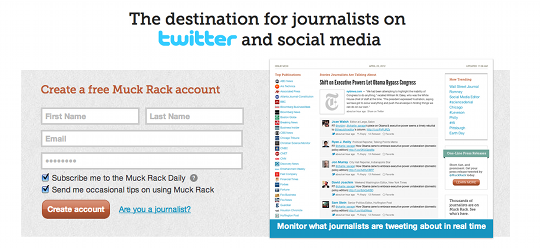
Our endlessly evolving communication technologies have already revolutionised the ways we communicate as private individuals. They have changed the ways broadcasters, newspapers and our favourite entertainments reach us – how we find them. How we find all kinds of information, goods and services. They have forced companies to actually communicate – to realise the individual consumer’s power to change public opinion. But these technologies also promise to change the internal face of business once and for all – to finally make work not only more productive, but easier, more intuitive, more fun, more rewarding, more human.
And this is the key starting point – the human element, the individual person whose job is supposed to change through the power of communication and information technology. If the technology does not help or suit the individual employee and her immediate team, if it does not help her do the things she needs to do on a daily basis – then it does not matter how well the technology integrates with a legacy system, or all kinds of business procedures – it simply will not be used, and the investment will have been wasted.
The following introduction to creating the Social Business, takes as its main cue the need to start from the individual experience and work upwards and outwards from there. It is a fundamental principle of our new communication technologies: If it works well for one, it is likely to work even better for many.
And of course, a short introduction will not answer all the questions, nor will it be a perfect and exhaustive blueprint, but we hope it will help set you on the right path.

1. PEOPLE AND THEIR NETWORKS
Business does not run without people, and people connect with each other to get things done. A brilliant idea is never hatched by a blank face on an org-chart, but by someone with a history, a family, a group of friends, a set of preferences. And this person’s idea does not start its journey towards realisation without first being thrust into a complicated game of ping-pong with the minds of many other individuals. Understanding how this process happens at your business is an absolutely essential part of building the foundations of a social business.
You need to really understand your people: what makes them tick, what makes them different from each other, what makes them excited, what absolutely makes them furious, what holds them together in certain groups, what communication preferences they already have, where they get their input from, and so on. The list of topics is long and changes for each company, but in order to start compiling it you need to start talking to people in a systematic way – you need to start conducting interviews, focus groups and send out surveys. You might even start a thorough network analysis, mapping who talks to who, who’s an important node, who hugs information but never passes it on, who’s everyone’s go-to-person for knowing about the juiciest gossip?
Once you’ve gathered together all the information, and analysed it, you should have a strong idea of who actually works for your company or individual unit – how they like to work, and with whom. What gets in their way, and what would help them do a better job.

2. ONE COMMUNICATION SIZE DOES NOT FIT ALL
One of the many problems with legacy IT systems that were supposed to morph into collaboration tools, was the one size fits all dictum. A connected problem was obviously that they weren’t designed to be collaboration tools in the first place. But the one size fits all thinking is the one that has stuck in people’s minds when they think about introducing new IT solutions to harness collective intelligence and foster a sense of community.
To build an online network you clearly need numbers of users, but not all have to use the exact same mix of tools. The use-case should drive the business-case. As in private life, employees should be given the option of building a set of tools and apps that will fit their bill, in addition to being part of the larger group that is the whole company.
It’s about understanding that employees, if given the freedom, and solid direction, will strive to find the best mixture of tools to get the job done. It’s about moving to a looser general framework, within which the “app store” and customisation for groups of users will push the larger community in the right direction. The fundamental idea being, again, to let an individual or a smaller group do something well, at the same time connecting that action to a wider context.

3. CONSUMER GRADE EXPERIENCE
As no communication solution in private life fits all users’ needs, so the tools have developed to deliver unrivalled user experience in their niche. Skype is an excellent phone, video and direct messaging tool. Facebook is perfect for staying up to date with friends and family. Linkedin knows how you would like to present yourself as a professional. The iPad is a solid, elegant and user-friendly platform for hosting all the different individual apps and tools and web pages.
In this perspective, the social business cannot choose to offer its employees tools and apps and hardware that deliver an inferior user experience. The consumer applications have pushed expectations of IT solutions far beyond what is currently delivered within the firewall, in most companies.
But a new breed of enterprise collaboration suites are fast evolving, continuously incorporating the enormous developments that are taking place both in technology and user behaviour. These suites deliver the flexibility and user experience of the app store, with the security and integration needed to comply with data protection policies. They offer the opportunity to grow small and dedicated collaborative groups that connect dynamically to a larger company structure.

4. ADOPTION THROUGH ACTIONS, NOT COMMUNICATION
Once the decision has been made to upgrade the company’s enterprise social networking tool-kit, the most important questions concern adoption. Traditionally it was thought that communicating about the tool was enough, just as long as the right ‘messaging’ was arrived at, the right tone of voice. But we know now, in this field as in every other sphere of life, that actions speak much louder.
Pushing adoption through action means using the information you gathered when you did your network analysis, to identify teams and individuals who will benefit from the new suit of tools introduced. Then you bring these groups and individuals on board early, you let them play with the functionality, you let them tweak it to fit their needs, you nurture super-users, you create how-to videos and interviews with advocates, you reward creative use by showcasing it.
You start to build a body of evidence – of accumulated actions that speak for themselves. Once you then decide to open up and invite more groups there is a table full examples, ready to show the new users what to do, where the richest pickings are.
You should also keep in mind that the process of adoption never ends. It is a continuous task. People come and people go. So make sure your adoption plan does not end after three weeks of introducing a tool, but runs alongside the community management for as long as the tool is in place.
It takes effort to make something work. It takes lots of effort to make it work really well.
It is key to never lose focus on providing the individual user with a strong localised reason to use the tool or the set of tools you are introducing. The organisational utility will flow from delivering benefit at that most important and fundamental level – making work easier, more intuitive, more fun, more rewarding, more human, for each, and then everyone.
(This post is kindly supported by Jive )

 By Suw Charman-Anderson, Consultant, It’s Open
By Suw Charman-Anderson, Consultant, It’s Open








